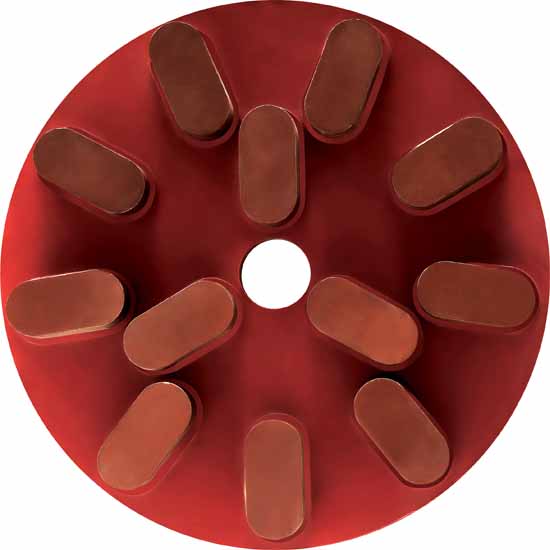before polishing
before you start on this project, you should first acquire the following materials.
polishing pads set
variable speed polisher grinder
velcro backing pad holder


clamps
a piece of wood
make sure to get a complete set of diamond polishing pads starting at 50, 100, 200, 400, 800, 1000, 2000, and 4000 grits. this way you will attain an excellent granite finishing. also, make sure to get the proper safety equipment. put on a pair of safety glasses to avoid any foreign substances in your eyes and put on a face mask to prevent yourself from inhaling small granite particles.
how to polish granite edges
polishing granite countertop edges is a piece of cake as long as you follow these 9 simple steps.
1. place the granite on a flat work surface
set the granite slab down on a level surface like a work table and sure it to place with a clamp or vise. when clamping the granite, place a thin piece of wood over the surface to ensure the clamp is not directly on the granite. this will avoid any damage to the surface while keeping the stone in place. the granite edges should be hanging off the end of your work table so you can polish them easily.
2. wet the edge with water.
wet the edge with water because this will minimize the development of dust particles.
3. attach the polishing pads to the grinder
attach the backing pads to the grinder’s arbor rotating clockwise. make sure to tighten it so it is not loose when you are polishing the granite. the first grit pad you should attach is 50.
4. start polishing with grit 50
a 50 grit pad is the coarsest buffing pad you can use. run the grinder at a low speed. if you are using a variable speed grinder, start at speed 2.
5. move the grinder from left to right
shift the grinder in constant, horizontal motions in quick strokes. keep the grinder around a 45-degree angle as you work to the edge’s topmost corner. corners should be polished for at least 5 seconds while applying a consistent amount of pressure to ensure that any visible scratches will disappear.
begin buffing the rest of the granite edge by moving the angle grinder downward using the same left to the right motion used initially. apply consistent pressure as you move to the bottom corner of the granite’s edge.
6. wipe down with water as you go
washing the edges with water will indicate if the granite has already been smoothed yet. if a portion of the granite edge is still wet, this means that you haven’t smoothed that area enough because the grinder is supposed to remove any moisture from the stone.
7. move to polishing with grit 100
once you are satisfied with the results using the 50 grit pad, it is time to replace it with a 100 grit dial. continue the same process as before. the grit 100 will make your granite smoother.
8. continue this process of switching grit pads
the higher the number of the pad, the finer the grit. the next grit pad to use after 100 is 200 then from 200 to 400. once you reach grit 400, the surface should look very smooth but it won’t have any shine. from 400, switch to grit 800. at this stage, you would see the slight shine on granite.
9. polish with finer grit buffing pads
after grit 800, it is now time to use grit pad 1000. when working with a finer grit, use a powerful water source to spray onto the edge of the granite for a smoother and more polished look. it is recommended to use a hose for this.
use the same left to right motion as you did before and continue applying a consistent amount of pressure while working the grinder from around a 45-degree angle. when polishing the granite edge, move your angle grinder in short, vertical motions as you continue to go from left to right. at this point, the granite has been smoothed out and your goal is to make the edge as shiny as possible. you will see a shift from low gloss to a high gloss on the granite edge at the end of this stage.
when you achieve the desired level of shine, you can now use the next grit pad 2000 and then 4000. you can spend as much time as you want working with the finer grit pads until you achieve the level of shine that you want.
don’t worry about the exact grit numbers, as long as they continue to increase. the exact number will depend on the recommendation of your granite manufacturer.
don’t forget to coat your granite with a sealer after you are done with polishing for a layer of protection. this will slow the rate at which stains can ruin the surface.
conclusion
polishing granite edges can be labor intensive and will require a bit of mechanical skills. you can always hire a professional if you are not sure how to handle the equipment needed to make the






